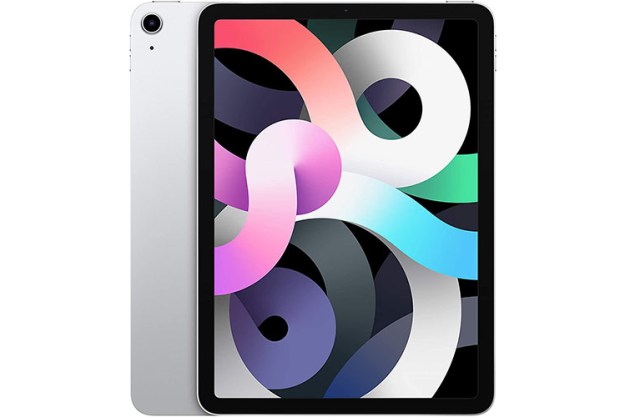
The average daily volume of email spam in the last month was 250 billion messages, according to Cisco’s SenderBase spam overview. That means spam email accounted for more than 85 percent of global email traffic.
Where did we get the term spam from in the first place? And how did it become so widely used?
As a term for junk email, spam entered the Oxford English Dictionary in 1998, and soon took over as the primary definition. It is currently listed as a noun meaning “Irrelevant or unsolicited messages sent over the Internet, typically to large numbers of users, for the purposes of advertising, phishing, spreading malware, etc.” and also as a verb meaning “Send the same message indiscriminately to (a large number of Internet users).”
But how did we get there? To start, it helps to skip down to the second entry: “A tinned meat product made from mainly ham.”
All you can eat
Hormel Foods introduced Spam luncheon meat in 1937. According to the official Spam Story, the name was the brainchild of Ken Daigneau, brother of Hormel Food’s VP, who won $100 in the contest to name Spam. It’s a simple shortening of “spiced ham” or “shoulders of pork and ham.”
By 1970 Hormel had sold more than 2 billion cans of Spam and it served as the basis of an irreverent Monty Python sketch in which a cafe menu consists of a list of items that are increasingly heavy on the spam, which eventually degenerates into a random group of vikings shouting “spam, spam, spam, spam, lovely spam, wonderful spam!” as the angry cafe waitress screams “Shut up!”
Spamming on the Internet
The first spam message certainly predates the popularization of the term. Brad Templeton suggests it was sent by a DEC marketer, called Gary Thuerk, in 1978. He used a printed ARPANET directory to try and drum up interest in the DECSYSTEM-20 computer.
Spammers generate about $200 million per year, but cost American consumers and business around $20 billion per year.
No one really knows who coined the term, but it began to be used in the 1980s in the MUD (multi-user dungeon) community as a reference to the Python sketch. Templeton’s excellent origin-of-spam investigation found spamming was used in MUD circles to describe flooding with data, using programs to flood a database, and flooding chat with a lot of useless text. Imagine a bot that spits out the word spam over and over.
Spam started getting really popular thanks to the Usenet community. A bug in a program called ARMM led Joel Furr to write a post that included the line, “Transformed by programming ineptitude into a monster of Frankenstein proportions, it broke loose on the night of March 31, 1993 and proceeded to spam news.admin.policy with something on the order of 200 messages.”
This monster has been running amok ever since, though the meaning has evolved.
“The term spam has gotten broader. It really only meant so much text and noise thrown at you so fast, that you couldn’t think or function. Discussion groups were useless if the signal to noise ratio dropped a lot,” Joel Furr explained to us, “It now tends to mean deceptive advertising in any electronic form that you have little or no opportunity to opt out of.”
The spread of spam
Spam had a disastrous impact on Usenet. Anonymous spammers filled it with junk and people left before spam filters took off. Spam spread quickly online in the days when it was commonplace for people to post their primary email addresses on message groups, forums, and in chat rooms.
“Unfortunately, our network architecture and communications protocols were written in an era where security was not a huge concern,” says Joel.
By 2001, spam was becoming a big enough problem that lots of people started trying to solve it. At that time around 8 percent of worldwide email was spam.
The term was well-known enough that companies like Spam Arrest, founded in 2001 as email source-verification software, used it in their names. Hormel Foods was upset at the use of its trademark and pursued a series of unsuccessful lawsuits between 2002 and 2007 against companies like Spam Arrest, Spambuster, and Spam Cube.
Hormel eventually gave up the litigation and embraced the spam legacy, even sponsoring the Spamalot musical in 2006.
This monster has been running amok ever since, though the meaning has evolved.
“While the association of our product with the internet or e-mail “spam”, including images, is in no way related, we strive to maintain a sense of humor around our iconic brand and enjoy consumers’ fun-loving appreciation of it.” Rick Williamson, Manager of External Communications for Hormel Foods told us, “Ultimately, we need to protect our brand equity, but it’s a fun and high-energy brand.”
There’s little evidence of a negative impact . Hormel sold its 7 billionth can of Spam in 2007 and sales continue to be strong. Hormel’s 2013 annual report revealed that Spam sales have increased year-over-year in 9 out of the 10 last years.
As successful as the canned meat has been, there’s little doubt that email spam has spread further. According to Symantec’s annual Intelligence Report spam accounted for 40 percent of all email in 2003, the same year Bush signed the questionable CAN-SPAM Act into law. A few lawsuits followed, but any hope that legislation might solve the spam crisis was soon dashed. By 2010 spam hit a peak, accounting for 89 percent of all email.
Why do spammers spam?
The simple answer is — because it works.
The attraction for senders is the low cost. One of the most pernicious things about spam email is the fact that it costs the receiver more than it does the sender.
A 2012 academic study, The Economics of Spam, suggested that spammers generate about $200 million per year, but cost American consumers and business around $20 billion per year.
“Most people don’t have a huge problem with spam — spam filters exist and for the most part work.” says Joel, “But there are always a few spams which slip through the filters, and the people who are most at risk — the elderly and others who are not computer-savvy and up to speed on current spam patterns — can fall victim.”
Anti-spam software and filters are fighting an adaptive enemy. The Spamhaus Project tracks spammers and tries to expose them, but they are often beyond the reach of law enforcement. Sadly, the rising sea of spam only seems to get deeper.
You may never be entirely free of spam, but at least you know where it comes from now.



